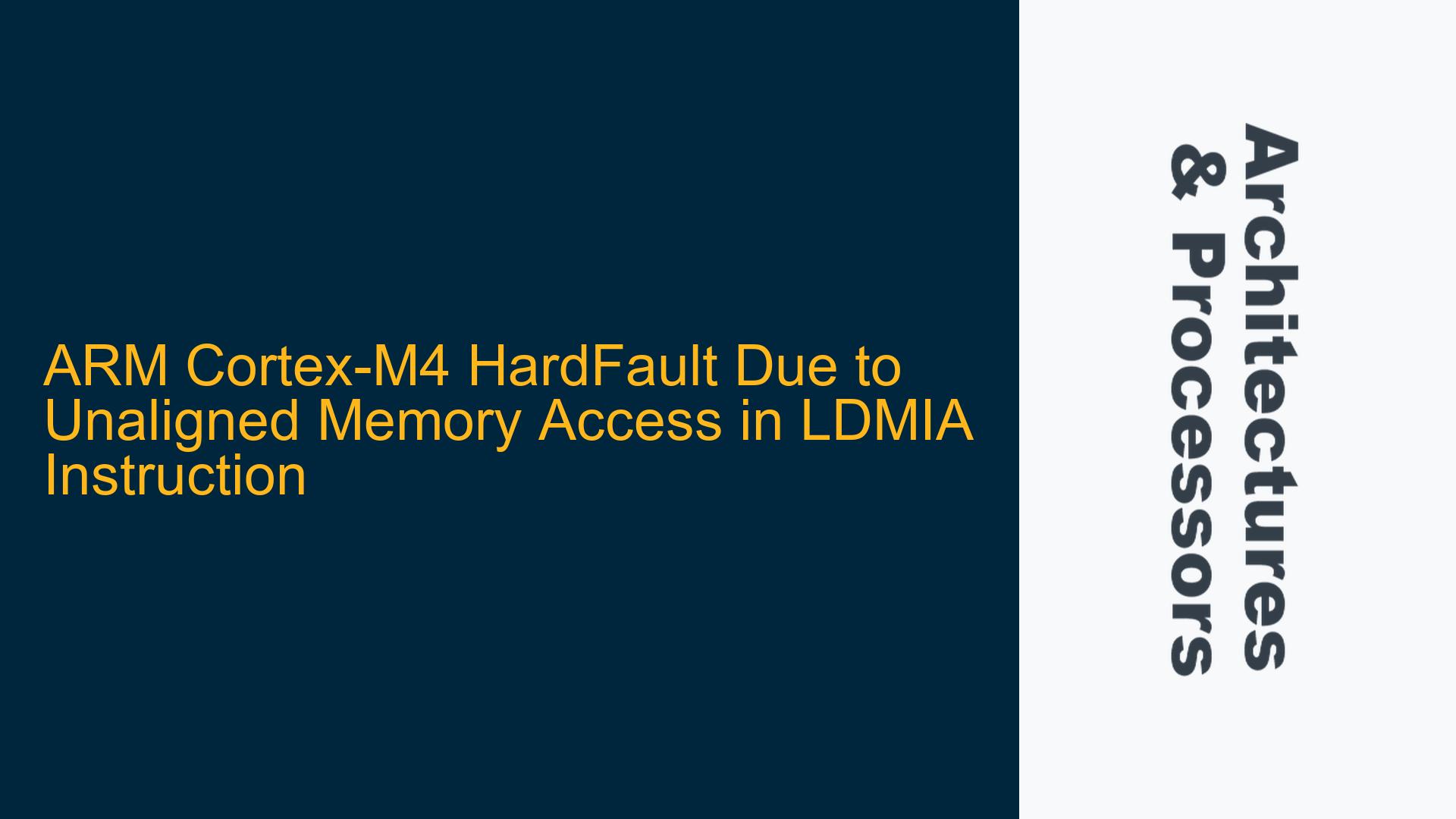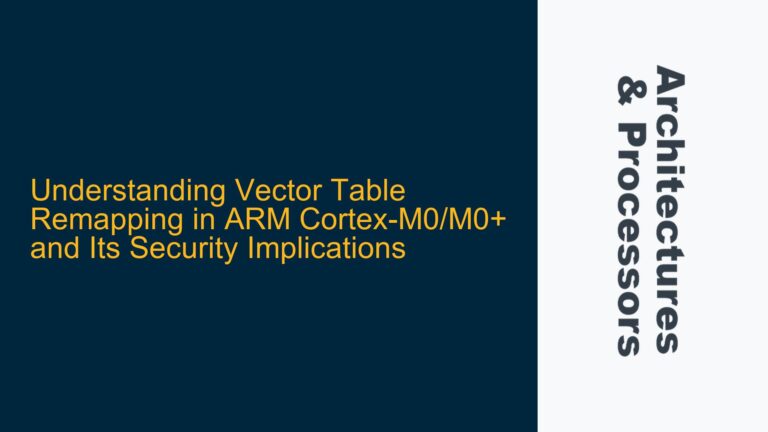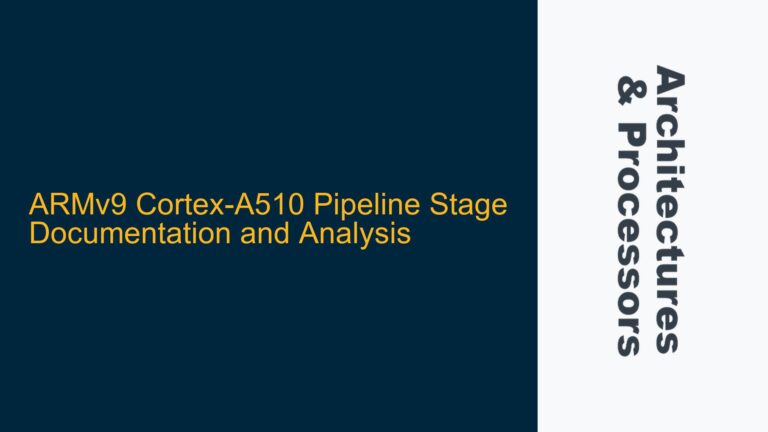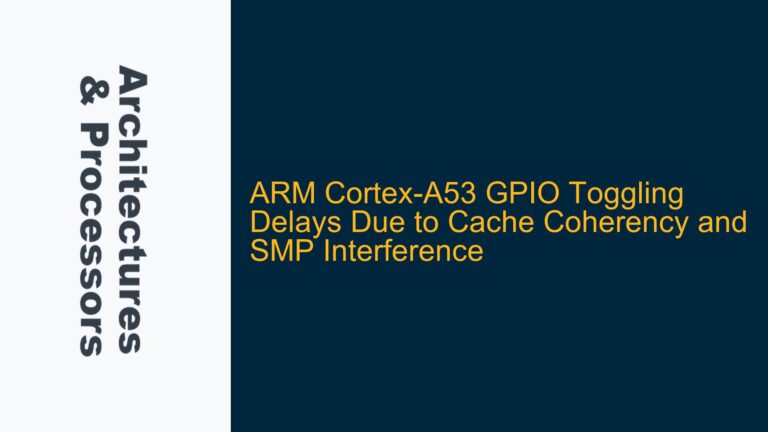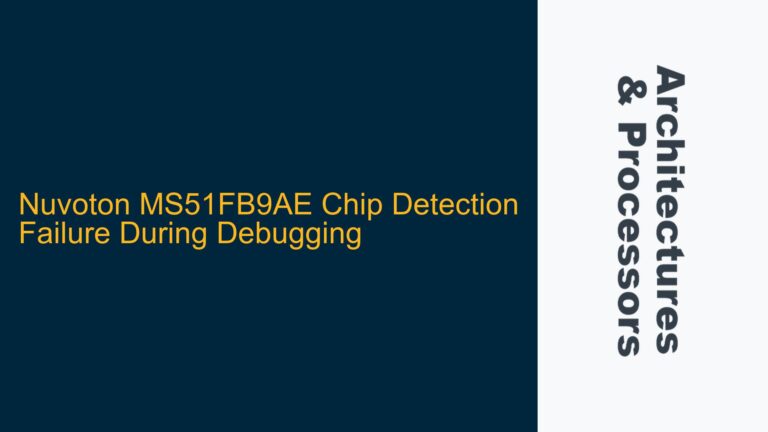ARM Cortex-M4 HardFault Triggered by Misaligned Data Access
The ARM Cortex-M4 processor is a highly efficient and widely used microcontroller core, but it is not immune to subtle issues that can lead to HardFault exceptions. One such issue arises from misaligned memory accesses, particularly when using instructions like LDMIA (Load Multiple Increment After). In this case, the HardFault was triggered during the execution of an LDMIA instruction at address 0x41dca6. The root cause was an attempt to load multiple registers from a memory address that was not word-aligned, which violates the alignment requirements of the ARMv7-M architecture.
The Cortex-M4 processor enforces strict alignment rules for certain memory operations. Specifically, the LDMIA instruction requires that the base address from which it loads data be word-aligned (i.e., divisible by 4). When this requirement is not met, the processor generates an alignment fault, which escalates to a HardFault if not explicitly handled. In the provided scenario, the LDMIA instruction attempted to load data from a hardcoded string in ROM that was not properly aligned, leading to the observed HardFault.
The processor status at the time of the fault provides critical clues:
sp = 0x2001B1D0: The stack pointer was pointing to a valid memory location.lr = 0xFFFFFFF1: The link register value indicates an exception return, confirming the HardFault context.msp = 0x2001B1D0: The Main Stack Pointer was in use, which is typical for exception handling.psp = 0x00000000: The Process Stack Pointer was not in use, indicating the fault occurred in a privileged thread.
The faulting instruction, LDMIA r4!, {r0, r1, r2, r3}, attempted to load four words from the address in register r4. However, r4 contained an unaligned address, violating the alignment rules and triggering the fault.
Misaligned Memory Access and ARMv7-M Alignment Requirements
The ARMv7-M architecture, which underpins the Cortex-M4, imposes strict alignment requirements for certain memory operations. These requirements are designed to ensure efficient and predictable memory access patterns, which are critical for the performance and reliability of embedded systems. The following operations must always operate on aligned addresses:
- Word-aligned accesses: Instructions like
LDMIA,STMIA,LDRD, andSTRDrequire word alignment (4-byte boundaries). - Halfword-aligned accesses: Instructions like
LDREXHandSTREXHrequire halfword alignment (2-byte boundaries). - Vector operations: Instructions like
VLDR,VSTR,VLDM, andVSTMalso have specific alignment requirements.
In the case of the LDMIA instruction, the base address (r4 in this case) must be word-aligned. If it is not, the processor generates an alignment fault. This fault is classified as a usage fault, but if the usage fault handler is not enabled, it escalates to a HardFault. The ARMv7-M Architecture Reference Manual explicitly states that misaligned accesses for these instructions will always result in an alignment fault.
The issue in the provided scenario was further compounded by the fact that the misaligned address originated from a hardcoded string in ROM. The developer had verified the alignment of the protobuf array but overlooked the alignment of the string being accessed by the LDMIA instruction. This highlights the importance of ensuring alignment not only for dynamically allocated memory but also for static data, such as strings and constants.
Resolving Alignment Faults and Preventing HardFaults
To resolve the alignment fault and prevent future HardFaults, several strategies can be employed:
1. Ensuring Data Alignment at Compile Time
The GCC compiler provides attributes to enforce alignment for specific variables or data structures. For example, the __attribute__((aligned)) attribute can be used to ensure that a variable or array is aligned to a specific boundary. In this case, the hardcoded string should be aligned to a 4-byte boundary using the following syntax:
static const char __attribute__((aligned(4))) hardcoded_string[] = "/ocpp?chargePointId=";
This ensures that the string is stored at an address that is divisible by 4, satisfying the alignment requirements of the LDMIA instruction.
2. Compiler Flags for Alignment Enforcement
The -mno-unaligned-access GCC flag can be used to prevent the compiler from generating code that performs unaligned memory accesses. This flag is particularly useful for ensuring that all memory accesses in the project adhere to the alignment requirements of the target architecture. However, this flag affects the entire project, so it should be used with caution, especially if the codebase includes legacy code or third-party libraries that may rely on unaligned accesses.
3. Runtime Alignment Checks
In some cases, it may be necessary to perform runtime checks to ensure that memory addresses are properly aligned before executing instructions like LDMIA. This can be done using a simple bitwise operation to verify that the address is divisible by 4:
if ((uintptr_t)address & 0x3) {
// Handle misaligned address
} else {
// Proceed with LDMIA or other aligned access
}
While this approach adds some overhead, it can be useful for debugging or handling cases where alignment cannot be guaranteed at compile time.
4. Debugging HardFaults
When a HardFault occurs, the processor provides valuable information through its registers and fault status registers. The following steps can help diagnose and resolve HardFaults:
- Inspect the Stack Frame: The stack frame at the time of the fault contains the values of the registers, including the program counter (
PC) and link register (LR). These values can help identify the faulting instruction and the context in which it was executed. - Check the Fault Status Registers: The Configurable Fault Status Register (CFSR) provides detailed information about the cause of the fault. For alignment faults, the
UNALIGNEDbit in the CFSR will be set. - Use a Debugger: A debugger can be used to single-step through the code and inspect memory addresses, ensuring that alignment requirements are met.
5. Best Practices for Alignment
To avoid alignment-related issues, developers should adopt the following best practices:
- Use Alignment Attributes: Always use alignment attributes for static data that will be accessed by instructions with alignment requirements.
- Validate Alignment at Runtime: When working with dynamic memory or external data, validate alignment before performing aligned memory accesses.
- Enable Usage Fault Handlers: Enable the usage fault handler to catch alignment faults before they escalate to HardFaults. This allows for more graceful error handling and debugging.
6. Example Fix for the Provided Scenario
In the provided scenario, the fault was caused by an unaligned hardcoded string. The following changes ensure proper alignment:
// Align the hardcoded string to a 4-byte boundary
static const char __attribute__((aligned(4))) ocpp_string[] = "/ocpp?chargePointId=";
// Use the aligned string in the code
strcat(buf, ocpp_string);
This ensures that the LDMIA instruction operates on a properly aligned address, preventing the alignment fault and subsequent HardFault.
By understanding the alignment requirements of the ARMv7-M architecture and applying these strategies, developers can avoid alignment-related HardFaults and ensure the reliability of their embedded systems.
